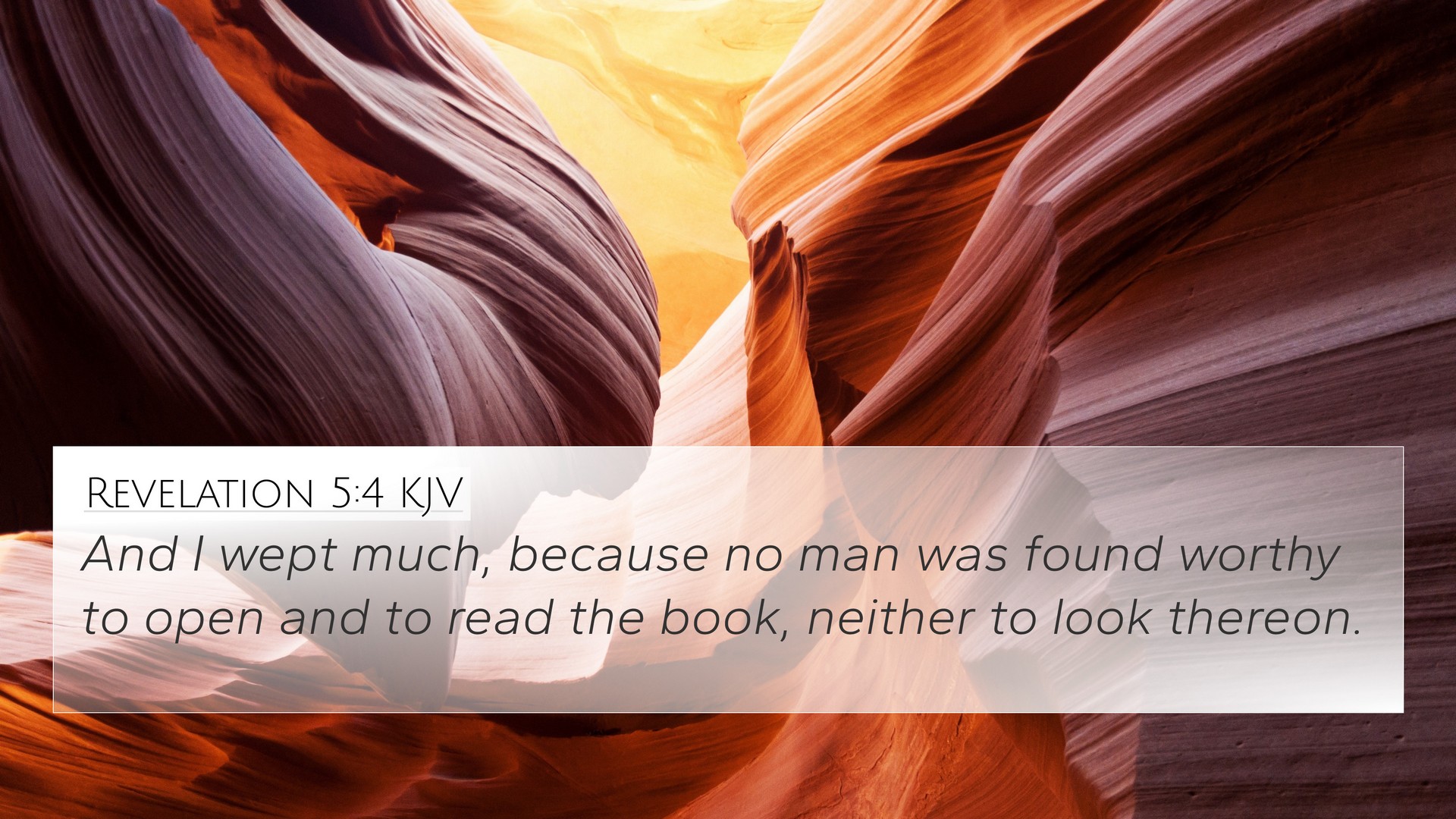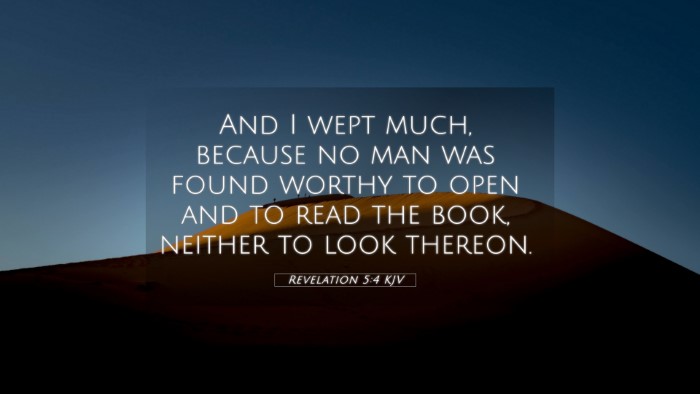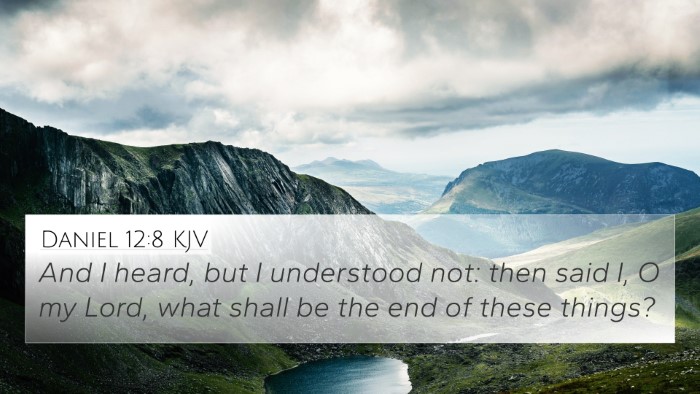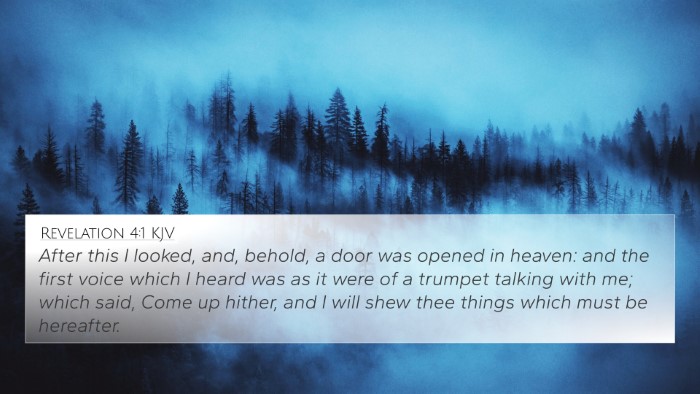Understanding Revelation 5:4
Revelation 5:4 states, "And I wept much, because no man was found worthy to open and to read the book, neither to look thereon." This poignant moment in Scripture reflects deep emotions tied to the search for worthiness and revelation.
Summary of Insights
The verse captures the Apostle John's despair as he realizes that no one is found worthy to unveil the mysteries of God contained in the scroll. The emotional weight here is significant, as it represents a universal longing for understanding and revelation.
Commentary Insights
- Matthew Henry: Henry emphasizes the symbolic significance of the scroll, representing the unfolding of God's plans. The worthiness to open the scroll is key, illustrating that only the Lamb, symbolizing Christ, possesses the authority to reveal God's purposes.
- Albert Barnes: Barnes points out that John's weeping reflects human incapacity to grasp divine truth. He suggests that this moment signifies the importance of Christ's role as the mediator who brings knowledge and understanding.
- Adam Clarke: Clarke highlights the emotional strain on John, illustrating it as a profound moment of recognition of worthiness. This reflects the broader human anguish in facing the limits of our comprehension without divine assistance.
Cross-References to Revelation 5:4
To enhance the understanding of Revelation 5:4, here are several relevant Bible cross-references that illustrate thematic connections:
- Hebrews 4:14-16: This passage reveals Jesus as our great high priest, able to empathize with our weaknesses, affirming His unique worthiness to approach God.
- Revelation 1:1: The unveiling of God's plans is a theme, showcasing the need for a worthy revealer which ties back to the Lamb mentioned in Revelation 5.
- Revelation 5:5: The very next verse introduces the Lion of the tribe of Judah, secure in His worthiness to open the scroll, providing hope immediately after John's lament.
- Luke 4:18-19: Jesus reads from Isaiah, proclaiming good news—highlighting His role as the one who brings divine revelation to mankind.
- Isaiah 29:11: This verse speaks of a sealed book, symbolizing knowledge inaccessible without divine intervention—paralleling John's experience.
- John 1:18: Here, we learn that no one has seen God, but Jesus, the unique Son, makes Him known—the intercessor who brings revelation.
- Romans 8:19: The creation eagerly awaits revelation, echoing John's longing and the subsequent mighty act of God's unfolding plan through Christ.
- Matthew 11:27: Jesus affirms His unique knowledge of the Father, reinforcing the theme of revelation and worthiness tied to His personage.
- Daniel 12:4-9: Daniel, much like John, is instructed to seal up visions, correlating the difficulty of divine comprehension in human terms.
- Acts 4:12: This verse presents Jesus as the only name through which salvation comes—again underscoring the importance of His worthiness for authoritative revelation.
Thematic Connections and Reflections
This exploration of Revelation 5:4 unveils the deep-seated connections across Scripture relating to Jesus’s role as the divine revealer. John’s tears resonate with the human experience of longing for understanding and clarity in God’s plan. Each cross-referenced verse further enriches our comprehension and showcases the inextricable links throughout biblical texts.
Tools for Bible Cross-Referencing
Utilizing tools such as a Bible concordance or a Bible cross-reference guide can significantly aid in discovering thematic connections between verses like Revelation 5:4 and the surrounding texts.
- Bible cross-reference system: Learn how to efficiently navigate references to enrich your study.
- Cross-referencing Bible study methods: Explore various approaches to understand Scripture deeply through comparison and contrast.
- Bible reference resources: Utilize these for thorough examination of connections within the Word.
Conclusion
Revelation 5:4 speaks to the human soul's yearning for divine revelation, beautifully linking our need for understanding with God’s redemptive plan revealed in Christ. As you study this verse, consider the interconnectedness of biblical texts and how they collectively narrate God’s overarching truth.




